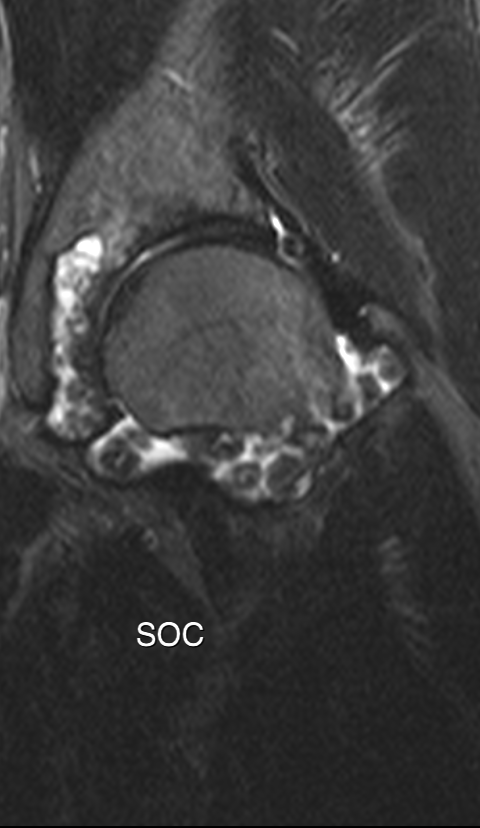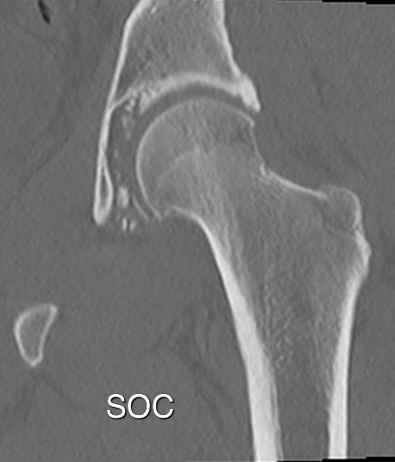A mono-arthritis of the knee due to synovial metaplasia similar to synovial osteochondromatosis.
20-40 age group
Same sex distribution
Theories include repeated trauma, a viral aetiology, a lipid disturbance or a histolytic response to an unknown stimulus.
Bone changes are present in 90% of patients with PVNS.
The plain film may suggest synovial disease although these can be subtle
• Erosion along superior aspect of the femoral neck junction
• enlargement of the fovea
• Preservation of bone density until relatively late.
• Cartilage loss is also late
• Traction spurs and osteophytes are uncommon.
MRI is the main stay for diagnosis of PVNS.
Haemosiderin deposition shows as low signal material on T2
Prominent blooming on T2* also helpful Whilst mono-arthritis of the hip may be the presenting complain of any inflammatory arthritis, the differential diagnosis also includes infection, particularly tuberculosis in developing countries and amyloidosis. viral aetiology, a lipid disturbance or a histolytic response to an unknown stimulus.
Femoral head erosions needs to be differentiated from a herniation pit. Although this has been described as a normal variant, it probably reflects underlying synovial disease, most commonly degenerate in aetiology. On plain radiography the synovial herniation pit is found high on the femoral neck on its anterior aspect. It has a lytic appearance with a well defined sclerotic margin. On MR a target appearance has been described with a peripheral well demarcated sclerotic area which contains fat in central area of low signal.
The principal difference with diagnosis on PVNS is synovial osteochondromatosis.
whenever PVNS is considered as a differential diagnosis, synovial osteochondromatosis (SOC) should also be considered.
The disease occurs in a very similar age group and a
similar clinical presentation to PVNS.
Both conditions are non malignant synovial metaplasias.
Phases of involvement are identified of both conditions although these are more obvious in SOC.
Three phases are described,
• the early active phase which is predominantly a synovitis,
• the late active phase when calcification begins
• quiescent phase
where the synovitis has regressed and the patient may be left without effusion or obvious synovitis but with lose intra-articular calcific and ossific bodies.
The imaging findings vary with these three different phases.
The plain film is the first step in the differentiation from SOC from PVNS.
Small areas of punctate or
occasionally, large conglomerate areas of calcification.
Erosions are significantly less common than in PVNS
consequently the absence of erosions in the presence of calcification is typical.
Difficulties with early disease which is predominantly synovial hyperplasia
Seen in approximately 10% of patients.
In addition early calcification may be obscured by the overlying bone.
CT may be helpful


